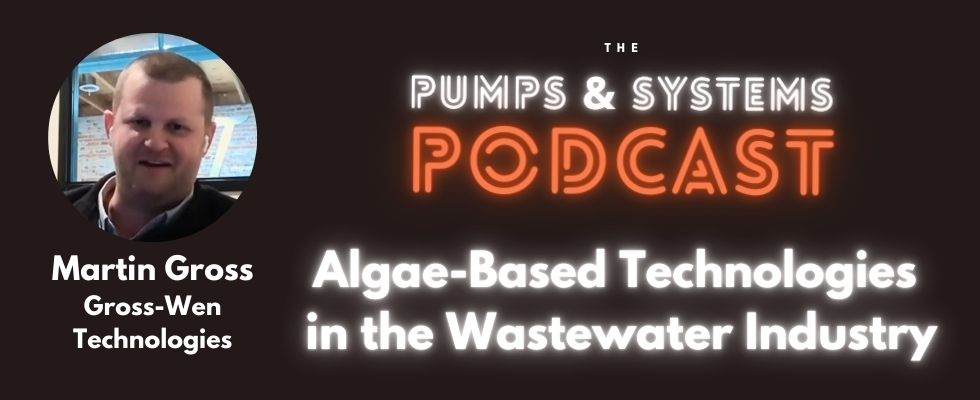
On the Pumps & Systems Podcast, we recently sat down with Dr. Martin Gross, the CEO and founder of Gross-Wen Technologies, who gave us an in-depth look at algae-based technologies and their use in the wastewater industry and beyond. Below are some of the highlights from that episode.
Q: Could you tell us a little about how microalgae are used in nutrient recovery?
GROSS: First of all, microalgae are single-celled microorganisms that are a lot like plants, but they’re only one single cell. So algae, as they grow, [are] taking CO2 out of the atmosphere—they’re like a plant that needs nitrogen and phosphorous to grow. So just like a farmer would add nitrogen and phosphorous onto their crop to grow a good yield of whatever crop they’re trying to grow, algae also are like a plant, where they need nitrogen and phosphorous to grow.
So in our case, we’re actually leveraging what they already want to do, which is eat nitrogen and phosphorous, and doing it in an application where nitrogen and phosphorous are actually needing to be taken out of the water. To say it simply, algae eat nitrogen and phosphorous out of the water, and then to actually remove it from the system, you harvest the algae from the system, which will then contain the nitrogen and phosphorous, thus cleaning the water.
Q: What is algae biomass, how is it created and what can we do with it?
GROSS: Algae biomass is really the material that’s grown during the algae treatment process. So as algae is growing, it’s dividing, it’s getting more mass, and eventually we actually remove that from the system. And what we remove from the system is called algae biomass. And algae biomass is like other crops in that it can be made into valuable products. If you think of a corn kernel, that corn kernel could be fed to a cow, it could be made into ethanol, it could be separated out and made into plastics and all these different things, and algae is really no different.
Algae contains carbohydrates, they contain lipids or oils, they contain protein and other valuable compounds like nutraceutical compounds and antioxidants. What we focus on when we grow algae on wastewater specifically is, you know, algae is being grown on some pretty nasty stuff at times, so it’s not very suitable for making a food ingredient, for example, or a feed ingredient—it wouldn’t pass those regulations, and I don’t think people would like to eat it, knowing it comes from wastewater. But what we do is we make it into products that are okay to be made out of wastewater products. For example, fertilizer. Our primary product that we’re making the algae into today is a slow-release turf-grass fertilizer. Think of your home lawn, or your favorite golf course—they spend a lot of money to apply fertilizer, make the grass green and grow well. [The algae-based fertilizer] tends to be very low-carbon footprint, very sustainable, because again, it’s coming from this microscopic plant [whose] general purpose is to clean the water.
So fertilizer is the primary product today, but we’re excited about a few others that are under development. One is making it into bioplastics. There are several companies that are taking our algae and evaluating it to make bioplastics. And we also have a partnership with a large oil and gas producer, where they’re interested in taking our algae and making it into sustainable aviation fuel. You can take the algae biomass that we produce and actually convert that into biofuels.
To watch the full interview with Dr. Martin Gross, visit the Pumps & Systems YouTube channel.

